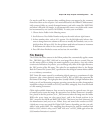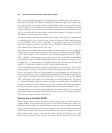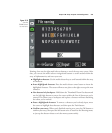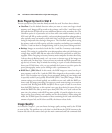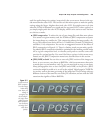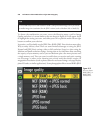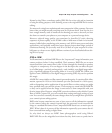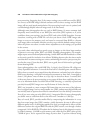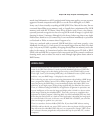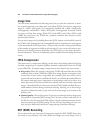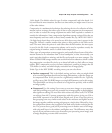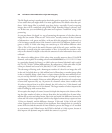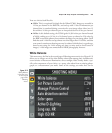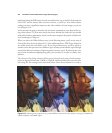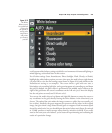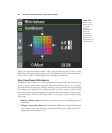
much visual information at all. If you don’t mind losing some quality, you can use more
aggressive Normal compression with JPEG to cut the size in half again, to 2.9MB.
In my case, I shoot virtually everything at RAW+JPEG Fine. Most of the time, I’m not
concerned about filling up my memory cards, as I usually have a minimum of five 32GB
memory cards with me. If I know I may fill up all those cards, I have a tiny battery-
operated personal storage device that can copy 8GB worth of images (a typical day’s
shooting) in about 15 minutes. Although it’s a bit slower, I often copy shots to my Apple
iPad because, thanks to its 3G connectivity, I can e-mail them immediately or post them
on Facebook or Flickr, no matter where I happen to be.
I also use a netbook with an external 320GB hard drive, and, most recently, a tiny
MacBook Air with an 11.6 inch screen (it’s not much bigger than my iPad). For short
trips, I rely on my D7000’s capability of copying directly from one memory card to the
other in the camera. As I mentioned earlier, when shooting sports I’ll shift to JPEG
FINE (with no RAW file) to squeeze a little extra speed out of my camera’s continuous
shooting mode, and to reduce the need to wade through eight-photo bursts taken in
RAW format.
Chapter 8 ■ Setup: Playback and Shooting Menus 239
HIDDEN JPEGS
You may not be aware that your RAW file contains an embedded JPEG file, hidden
inside in the JPEG Basic format. It’s used to provide thumbnail previews of JPEG files,
and to display images you’ve shot during picture review on the D7000’s built-in screen.
That’s right, even if you’re shooting RAW (only), the D7000 still creates a JPEG version,
and that—not your RAW image—is displayed on the color LCD.
This is also why you may notice an interesting phenomenon when loading a RAW image
into a program like Nikon Capture NX2 or Adobe Lightroom. When the software first
starts interpreting the RAW image, it may immediately display this hidden JPEG view
which has, as you might expect, all the settings applied that you dialed into the camera.
Then, as it finishes loading the RAW file, the application (Lightroom in particular) uses
its own intelligence to fine-tune the image and display what it thinks is a decent version
of the image, replacing the embedded JPEG. That’s why you may see complaints that
Lightroom or another program is behaving oddly: the initial embedded JPEG may look
better than the final version, so it looks as if the application is degrading the image qual-
ity as the file loads. Of course, in all cases, once the RAW file is available, you can make
your own changes to optimize it to your taste.
There is a second use for these hidden JPEG files. If you shoot RAW without creating
JPEG files and later decide you want a JPEG version, there are dozens of utility programs
that will extract the embedded JPEG and save it as a separate file. (Google “JPEG extrac-
tor” to locate a freeware program that will perform this step for your Mac, PC, or other
computer.)



